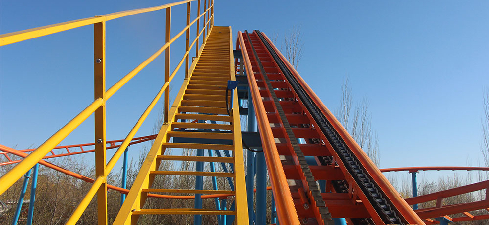- Albanian
- Arabic
- Belarusian
- Bengali
- Czech
- English
- French
- German
- Hebrew
- Hungarian
- Indonesian
- irish
- Italian
- Japanese
- kazakh
- Persian
- Russian
- Thai
- Uzbek
- Vietnamese
rollercoaster loop
The Thrilling World of Rollercoaster Loops
Roller coasters have captivated thrill-seekers and casual park-goers alike for over a century. Among their many features, the loop stands out as a design element that intensifies the exhilaration of the ride. The rollercoaster loop, with its dizzying heights and g-force effects, not only adds excitement but also showcases the incredible engineering feats achieved in amusement park design.
At its core, a rollercoaster loop is a circular or oval-shaped inversion that takes riders upside down, creating feelings of weightlessness and adrenaline rushes
. The basic physics behind a loop involves centripetal force, which keeps the riders pressed against their seats as the coaster car traverses the top of the loop. Properly designed, this force provides the perfect balance of thrill and safety, allowing riders to experience the rush without excessive risk.Designing loops is both an art and a science. Engineers must consider multiple factors, including the speed of the coaster, the height of the drop before the loop, and the overall layout of the track. The diameter of the loop is crucial; too small, and riders may feel an uncomfortable increase in g-forces; too large, and the thrill may be diminished. A perfect loop often has a diameter of about 50 feet, allowing for a smooth ride while maintaining the desired intensity.
Notably, rollercoaster loops come in various shapes and sizes, enhancing the thrilling experience in different ways. For example, the classic vertical loop is a simple circular design that is most commonly found in traditional roller coasters. However, more innovative designs, such as the heartline loop, have emerged. This type of loop, which is elongated and tilted, allows riders to feel a more natural and less jarring sensation as they experience the inversion.
rollercoaster loop

One of the most famous roller coasters featuring a loop is The Smiler located at Alton Towers in the UK. It boasts a staggering fourteen inversions, featuring a series of loops and twists that challenge the limits of traditional design. The Smiler is not only renowned for its loops but also for its clever theming and incorporation of psychological effects, keeping riders on the edge of their seats both literally and metaphorically.
Riding a rollercoaster with loops can evoke a myriad of emotions. As the coaster ascends towards the loop, anticipation builds. Once at the peak, riders often experience a moment of weightlessness that can be both thrilling and terrifying as they plunge downwards. The loop itself presents a breathtaking view of the park from above, contrasting the rush of speed with awe-inspiring scenery. This blend of fear and excitement gets the adrenaline pumping, igniting a sense of freedom that many crave.
Moreover, watching others experience loops offers its own unique thrill. Spectators often gather around high-speed loops, waiting eagerly for the coaster to whip through the curvature, all while expressing gasps of awe and laughter at the hair-raising expressions of the riders. This shared experience creates memorable moments that contribute to the communal atmosphere of amusement parks.
In conclusion, rollercoaster loops exemplify the exhilaration and engineering innovation inherent in amusement rides. Their design and execution represent the perfect marriage of science and thrill, providing endless entertainment for adventurous souls. Whether soaring upside down or watching from the sidelines, the looping rollercoaster is a symbol of carefree fun and the exhilarating spirit of adventure that draws people to theme parks worldwide.
-
Flume Ride-Hebei Zhipao Amusement Equipment Manufacturing Co., Ltd.|Thrilling Water Attraction&NIST Safety StandardsAug.01,2025
-
Double Ferris Wheel Sale | Premium Custom RidesJul.31,2025
-
Flume Ride-Hebei Zhipao|Water-Based Attraction, Safety Standards, High-Speed DescentJul.31,2025
-
Flume Ride: Thrilling Water-Based Adventure & Advanced Engineering - Hebei ZhipaoJul.31,2025
-
Flume Ride-Hebei Zhipao Amusement Equipment Manufacturing Co., Ltd.|Thrilling Water Attraction&Customizable DesignJul.30,2025
-
Flume Ride - Hebei Zhipao Amusement Equipment | Water Coaster, Thrilling DescentJul.30,2025
